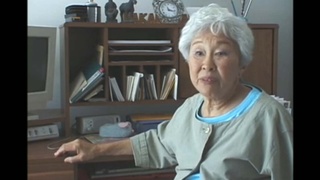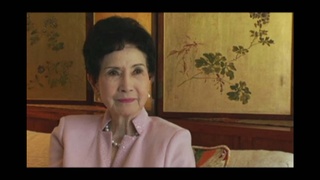Interviews
Coming back to America from Japan before the war
After I got back, I got to go to work again with my mother. And then the FBI come. They think I was hiding something, that was something else. I said, “Look for yourself.” I have nothing to hide, you know.
I was in Japan yeah. They thought I could be a spy or something. They looked little cellar and little house. In those days my mother used to make daikon no tsukemono in the big taru there. They used to tip that thing over. All that hard work there. I mean, they did everything that was wrong.
They thought we were hiding that thing or signaling. Look for yourself. Nothing like that. So they go under the basement, under the cellar and find barrel of daikon no tsukemono and that’s it. There’s nothing to hide.
Date: May 24, 2011
Location: California, US
Interviewer: John Esaki
Contributed by: Watase Media Arts Center, Japanese American National Museum
Explore More Videos



Her experience as a Japanese-American schoolchild in Oceanside, California, after the bombing of Pearl Harbor
(1924-2018) Artist and playwright.

Thoughts on the post-9/11 atmosphere in the U.S.
(1930-2018) Nisei born in Peru. Taken to the United States during WWII.

Making the decision to resist the draft
(b. 1923) Nisei from Washington. Resisted draft during WWII.

Discharged from the U.S. Army after Pearl Harbor
(b. 1918) Founder Azumano Travel

Closing the Japanese school and deportation (Spanish)
(b. 1932-2016) Peruvian painter

Death of sister in October 1942
(1915 - 2011) Nisei florist who resettled in New York City after WW II. Active in Japanese American civil rights movement

Living conditions in prison while serving time for resisting the draft
(b. 1925) Draft resister

Talking to children about decision to resist the draft during World War II
(b. 1925) Draft resister

Reflecting on Japanese Americans' response to incarceration
(b. 1925) Draft resister

Encountering a train full of Japanese Americans being transported to a concentration camp
(b. 1923) Chick sexer

Father interrogated by FBI, but not taken away
(1925 - 2018) Nisei educator from Hawai‘i


Sneaking out of the Hastings Park camp during World War II
(b. 1928) Doctor. Former Chair of the Japanese Canadian Redress Foundation.
